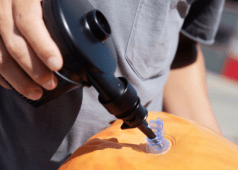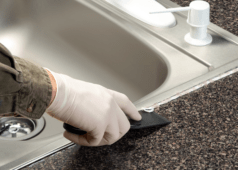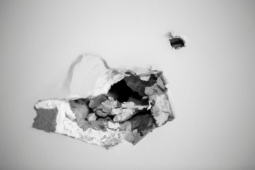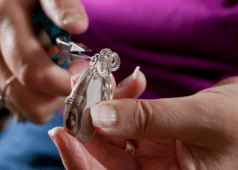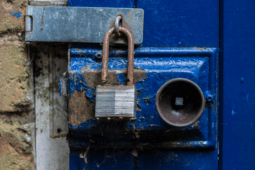ManMade Essential Toolbox: Why You Definitely Need a Set of Metal Cutting Snips
Each week in 2015, ManMade is sharing our picks for the essential tools we think every creative guy and DIYer needs. We’ve selected useful, long-lasting tools to help you accomplish a variety of projects, solve problems, and live a hands-on lifestyle that allows you to interact with and make the things you use every day.

Sometimes you need to cut paper, sometimes you need to cut wood, and sometimes you need to cut metal. And when that occassion arises, you need a pair of snips.
Also called “tin snips” “metal shears” “aviation snips” and the like, these tools are designed to cut sheet metal, wire mesh and netting, etc, with ease. The classic design – tin snips or tinners snips – have been around for at least two thousand years, and basically resemble a pair of scissors. They’re typically made of carbon steel, and have longer handles and shorter blades to increase leverage.

Modern snips are know as “compound-action snips” or (what I call them) “aviation snips” since they were developed to aid the construction of aircraft. These use “mechanical linkage” to increase your advantage – i.e. easier to cut thicker material without changing the length of the tool.
There’s also “compound offset snips” which turns the angle of the shears, allowing you to keep your hand away from the work, minimizing contact with the sharp edges.
What do you use them for?
Basically, any time you want to cut thin aluminum, copper, brass, or steel. This includes a lot of common household and yardwork tasks, and if you know what they can do, they’ll be the first tool you grab for a variety of jobs.

These are great for cutting straight lines in wire mesh – like chicken wire, gardening barriers, fencing, etc. They also are great for cutting vinyl siding or molding transition strips.

These are also the only tool recommended to cut sheet metal, duct work for HVAC or laundry, or roofing materials such as gutters, spouts, and steel roof. They can cut straight lines or circles for joints.
I also think they’re the single best tool out there for opening thick clamshell-style packaging. Try it, and you’ll never use office scissors or a pocket knife again.

What’s the deal with the colored handles?
There’s a good reason, of course, that you need a three-piece set to accomplish any cutting task. The yellow handled shears are designed to cut straight lines and gentle curves; the green ones will cut straight and clockwise (to the right); and red will cut straight and counter clockwise (to the left). Remember, this comes from the aviation world, and the whole red/left/port & green/right/starboard scheme is standard there. If you have trouble remembering (I always tend to emphasize the Rs and think “Red=Right”), it’s pretty easy to look at the curve of the blades, or you can just write R and L on the handles with a Sharpie.

Which Tin Snips or Aviation Snips are the Best?
Whatever you call them, there’s an industry standard: Wiss. They work, they’ve worked for decades, and can be resharpened to work for many years to come. This is a buy-it-once-buy-it-right kind of tool, so get the good stuff. One of our contributor’s owns the Milwaukee set below, and recommends it highly.
You can buy each pair individually, or as a set. If you start with one, go for the yellow, or if you plan to do duct work, get the green if you’re right-handed and left if you’re left-handed. Any pair will work in either hand, but this is the natural direction you’ll approach curved cuts. But by the time you’re bought two pair, you can get the whole set for basically the same price.
ManMade Recommended:



